How to choose and grow oak seedlings?
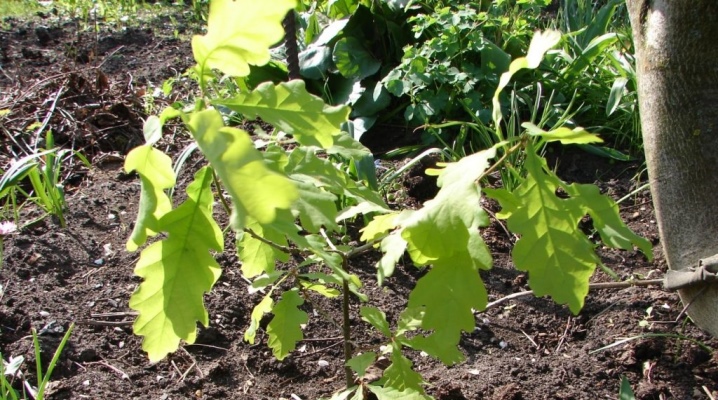
Oak is a powerful, vigorous tree that can be grown in your backyard. This representative of the beech family grows rather slowly, easily tolerates frost and drought, and quickly adapts to new conditions after transplanting. What types and varieties of oaks are popular with gardeners and landscape designers? How to choose a healthy oak seedling? How to plant and care for a sapling?
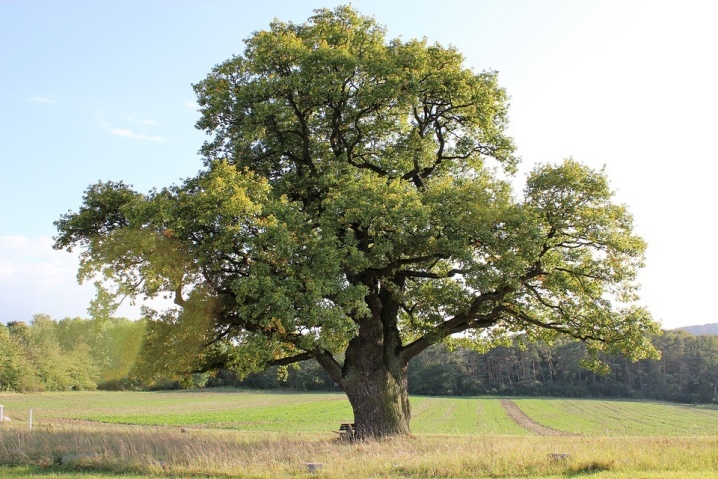
Varieties
Common oak or English oak is a species widespread in northern Africa, as well as in the territories of South-West Asia, Eastern and Western Europe. In Russia, this species is found in the territory stretching from Finland to the Urals.
From this species, breeders managed to get a number of interesting garden forms and varieties, presented below.
- Concordia Is a very attractive variety of pedunculate oak used in landscape design and urban gardening. The height of an adult tree can reach 10 meters. The crown of young oak trees has a conical shape, which becomes spherical over the years. Leaves are elongated, pinnately lobed, golden lemon color with a green tint.
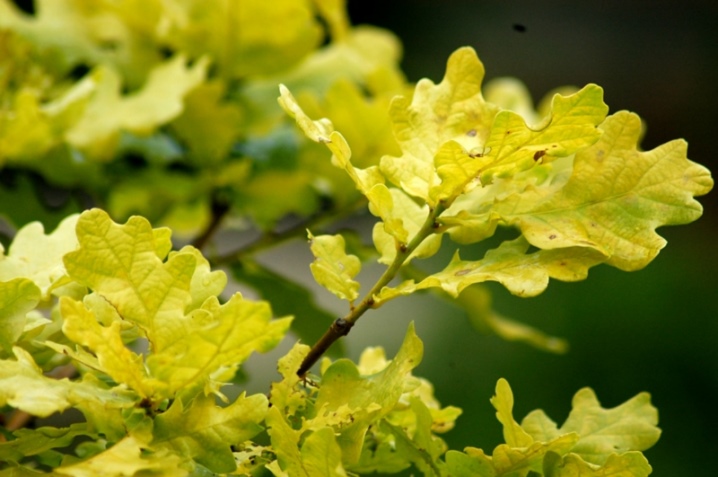
- Fastigiata - another decorative variety of pedunculate oak with a narrow-columnar crown. The plant can reach a height of 15-25 meters. The leaves are long, notched, leathery. By autumn, the foliage of this oak variety becomes yellow and red-brown.
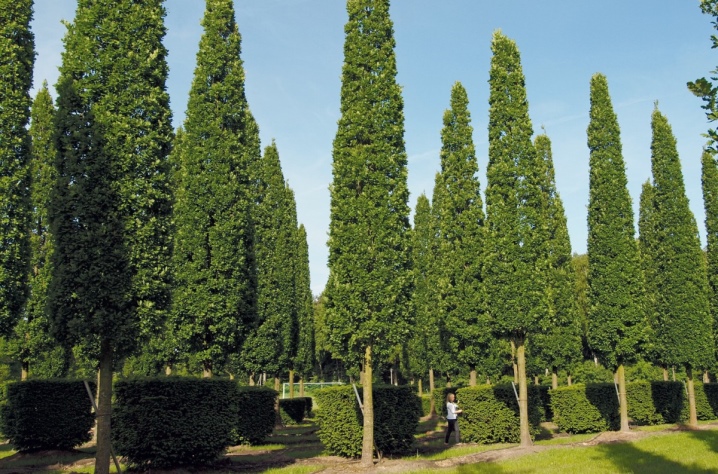
- Atropurpurea - a highly decorative frost-resistant variety of English oak with purple-violet foliage. In mature trees, the leaves acquire a green-purple color over time. The height of mature trees can vary from 8 to 10 meters.

- Filicifolia - original garden form of pedunculate oak with fern-like leaves. Mature trees can reach a height of 15 meters. The crown is elongated, dense and dense. By autumn, the green foliage of this oak variety becomes copper-red.
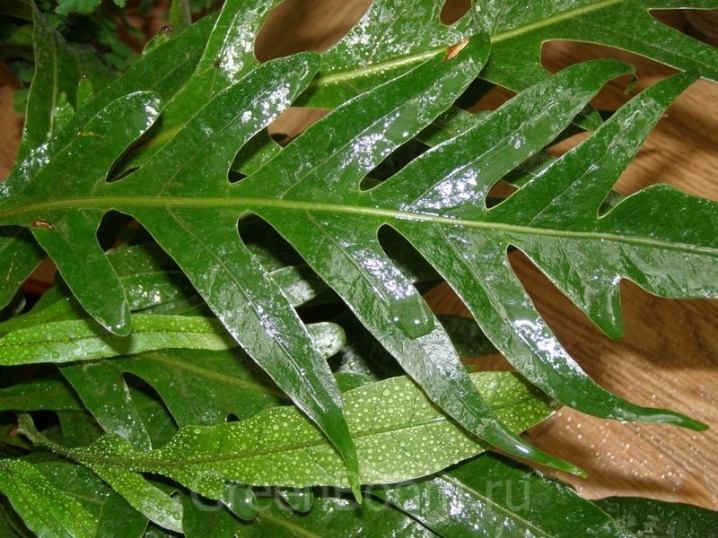
- Red oak - a species of representatives of the beech family, common in the east of North America and Canada. Divorces in England, France, Germany, Russia. Oaks of this species are capable of reaching a height of 25 meters. The trunk of the tree is flat, straight, covered with brownish-gray bark. The crown is dense, tent-shaped. The leaves are carved, long (up to 25 centimeters). Young leaves have a reddish color, which is replaced by emerald green by summer. By autumn, the foliage of young trees turns red, and of old ones it becomes brown.
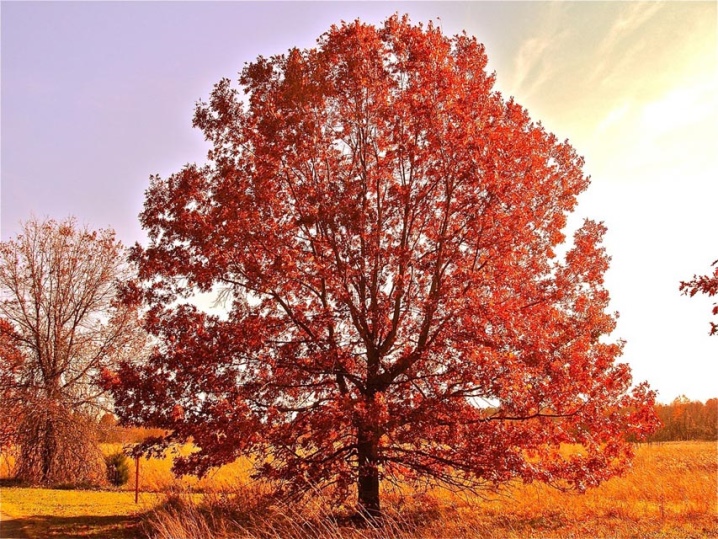
- Aurea - a spectacular variety of red oak, often found in urban gardens and national parks in Europe. The trees can be up to 15 meters high. The crown is strong, spreading. The color of the leaves is rich yellow. With the onset of autumn, the foliage takes on a bright orange hue.
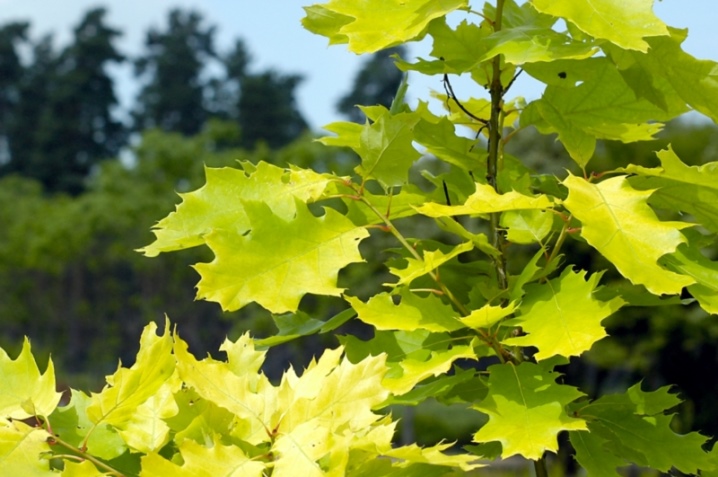
- Swamp oak - a species of large representatives of the beech family, the height of which can reach 25-30 meters. Mature trees have a powerful spreading crown, the diameter of which can be 15 meters. The leaves are long (12-13 centimeters), carved, deep green in color. By the fall, the foliage takes on a bright purple color.
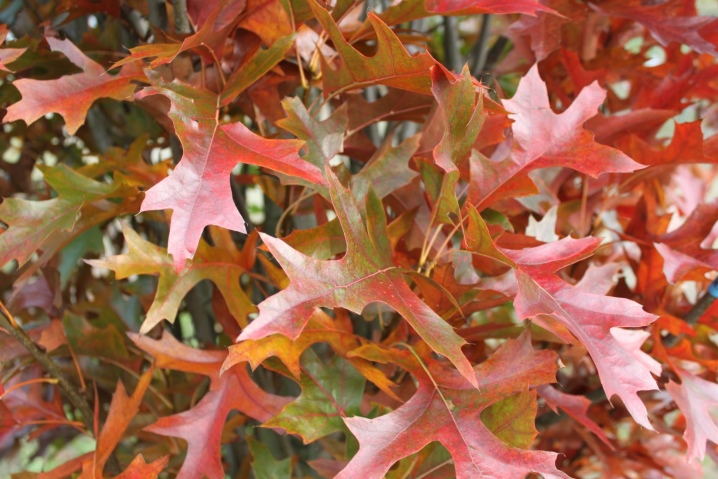
- Green pillar - a very attractive variety of swamp oak with a narrow pyramidal, elongated crown. The leaves are serrated, gray-green, by autumn acquiring a burgundy color.
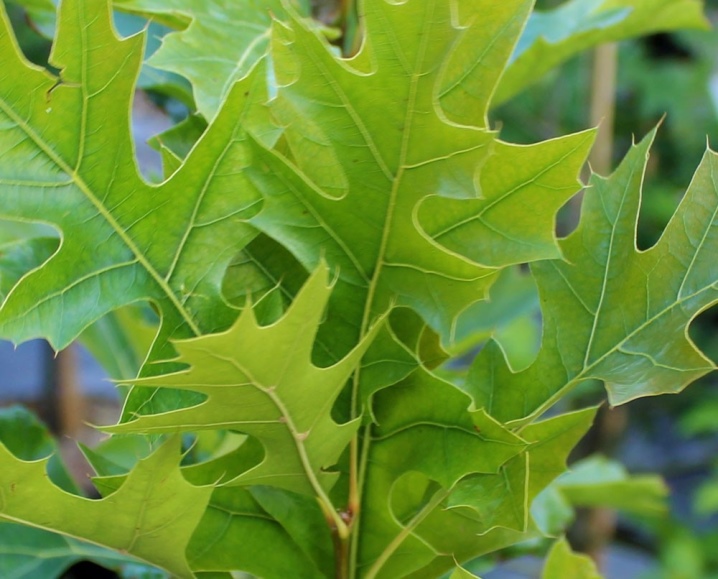
- Green dwarf - decorative standard grade of swamp oak. The height of the trees depends on the height of the trunk and can vary from 2.5 to 6 meters. Frost-resistant, wind-resistant variety.
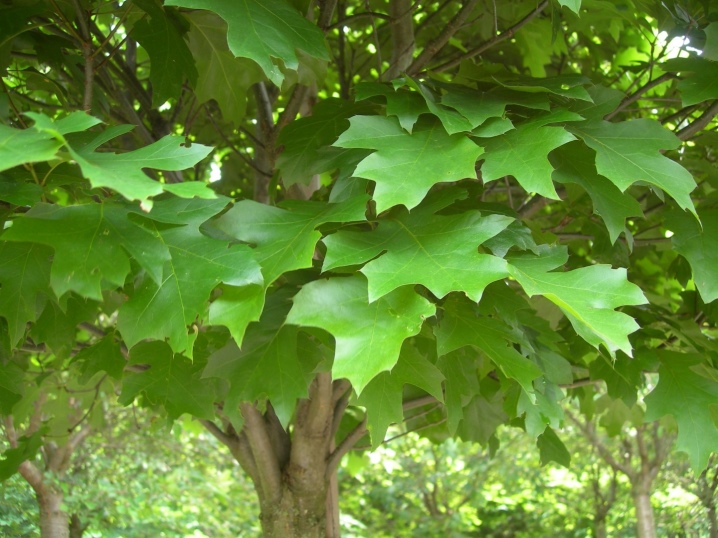
Landing dates
When planting oak seedlings in the spring, you must wait until the ground is finally warmed up. This condition also applies to the planting of seedlings brought from the forest, and seedlings purchased in the nursery. It is allowed to plant seedlings in early summer and autumn.
The latest planting date is 1-1.5 months before frost.
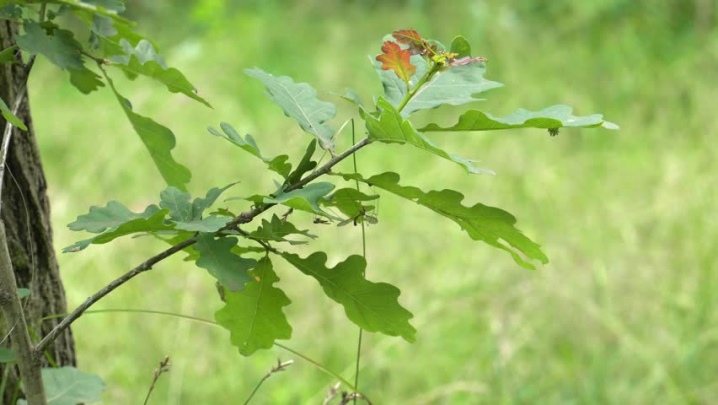
Sapling selection
Experienced gardeners recommend planting seedlings at the age of 1-2 years on the site. The thickness of the seedling should not be less than 1.5 centimeters. At this age, the trees already have a sufficiently developed, but still compact root system, so it will not be difficult to plant them. You can determine the approximate age of a seedling by its appearance and the height of the trunk.
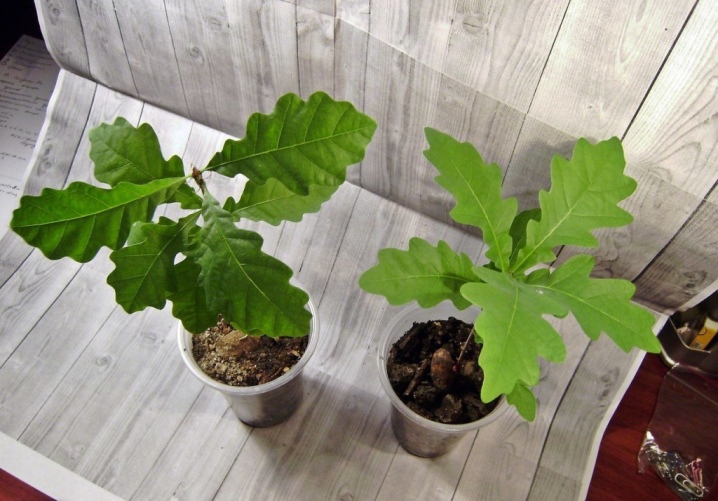
Most of the oak species each year builds up the next tier of whorls - several (2-3) branches located at the same height. Thus, the number of tiers can indirectly indicate the age of the plant. The height of young oak trees depends on their species. In the first year of life, their height can vary from 8 to 30 centimeters, in the second - from 35 to 80, in the third - from 60 to 100 centimeters.
Planting process
Before planting seedlings, it is necessary to choose a well-lit place for them on an area with loose soil. It is highly undesirable to plant young plants in places where water accumulates and stagnates.... The landing site must be at least 3.5 meters from the outbuildings.

Oak should be planted at a distance of 3-6 meters from other plants.
The planting process is as follows:
- 1-2 months before disembarkation, in the chosen place, equip a planting pit with a depth of at least 80 centimeters (the diameter of the pit should be slightly larger than the size of the root ball);
- at the bottom of the pit, a drainage layer is poured, consisting of crushed stone, broken brick or large pebbles;
- on the day of planting, a soil mixture is prepared, consisting of garden soil with the addition of rotted manure (2 buckets), ash (1 kg), superphosphate and lime (1.5 kg of each component);
- fill the pit with soil mixture by about 1 / 3-1 / 2;
- remove the seedling from the container without shaking off the earthy coma from the roots;
- before planting, the lower part of the plant is inspected for dry roots and, if found, removed with a sharp razor;
- place the tree vertically in the hole, straighten the roots and carefully fill the hole with the remaining soil mixture (the root collar is not buried!).
After planting, the seedling is watered and mulch the ground in the near-stem circle. Above the planted plant, it is imperative to equip a temporary shelter from direct sunlight.
Care
Oaks are considered hardy plants that do not require specific maintenance. The main activities that should be carried out when growing them are watering, feeding, removing weeds.
Watering
Oak is able to calmly tolerate a short-term deficiency of soil moisture. At the same time, he rather painfully perceives the stagnation of water at the roots, which can cause them to rot. Therefore, it is impossible to water the plants too often (except for dry hot days, when water from the upper layers of the earth evaporates quickly.) In the first week after planting, the seedling is watered daily. Further, the frequency of watering is adjusted in accordance with the needs of the plant and weather conditions.
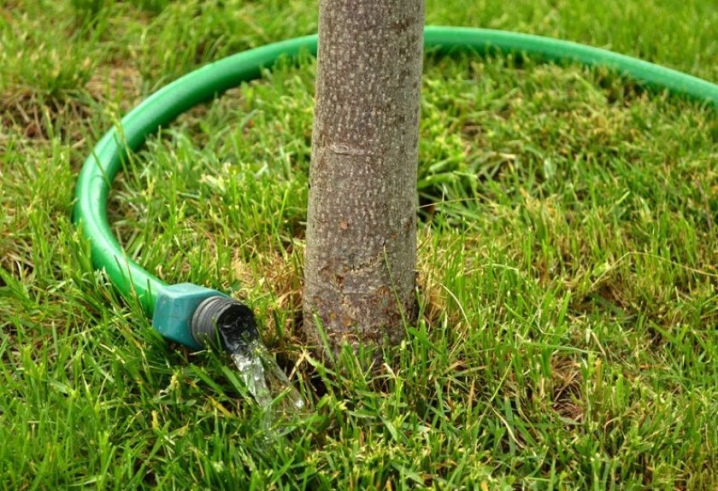
Top dressing
In the second year after planting, the young oak should be fed. In the spring, the plant is fed with ammonium nitrate or urea (it can be replaced with rotted manure). At the beginning of autumn, fertilizing with nitroammophos is carried out.
Oaks are fed 2-3 times a year.
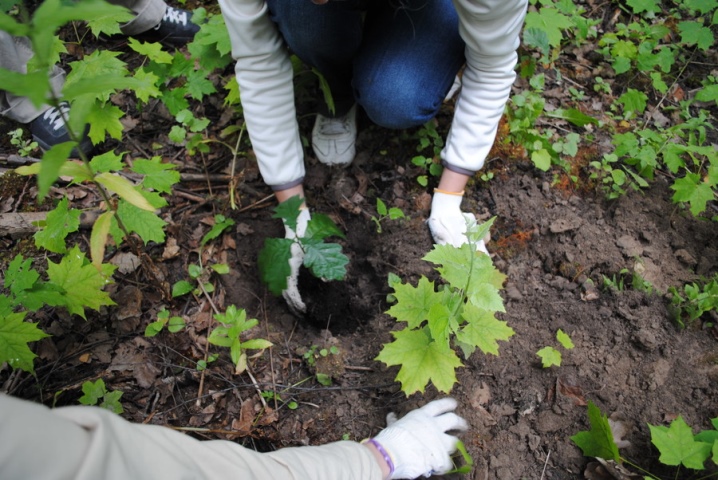
Weeding
The surface of the ground in the trunk circle is kept clean, regularly cleaning it from plant debris and weeds. Failure to comply with this condition can cause damage to the plant by insect pests and pathogens that prefer to live in thickets of weeds. You can prevent the active growth of weeds with the help of regular mulching of the soil in the near-trunk circle.
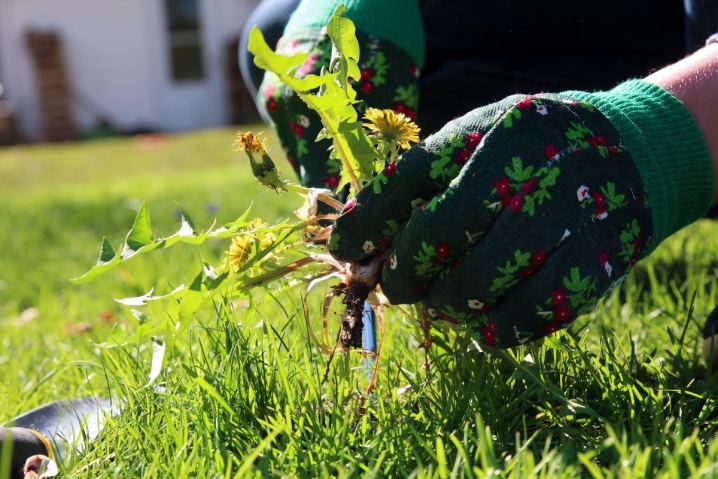
Diseases and their prevention
One of the most dangerous diseases that pose a serious threat to oak trees of any age is bacterial dropsy caused by pathogenic microorganisms. Its main symptoms are:
- softening and dying off of the bark;
- the formation of dirty brown spots of irregular shape on the leaves;
- discharge of dirty brown mucus by the stem of the plant.
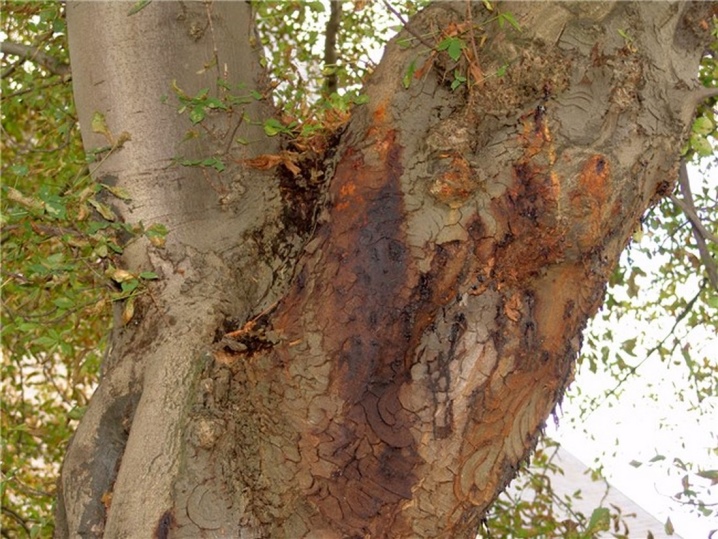
This disease requires immediate complex treatment. It consists in the treatment of the affected oak with antibacterial drugs and the implementation of intra-trunk injections. Injections are performed using antibiotics. In advanced stages, the affected tree is destroyed in order to avoid contamination of other inhabitants of the garden.
Green leaf roll - an insidious pest that affects not only oaks, but also many other deciduous trees - maples, beeches, hornbeams, birches. Caterpillars this winged insect is devoured by foliage and young shoots, as a result of which the tree loses its attractiveness and begins to dry out.
Trees are treated in spring to fight the parasite. insecticides ("Karbofos", "Binom", "Danitol"). The main prevention of diseases and pest damage to oaks is proper care and regular cleaning of dry plant waste. Some gardeners also feed trees with biostimulants that strengthen the plant's immunity.
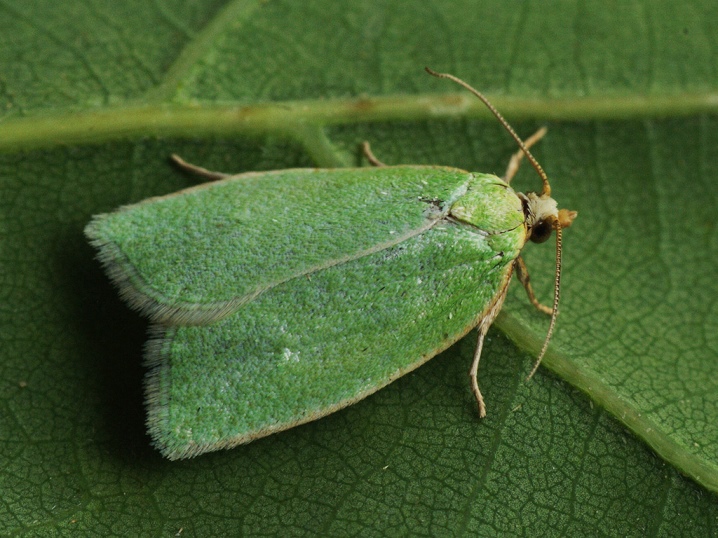
Preparation for wintering
Adult oaks are able to easily overwinter without shelter for the winter. However, young trees (1-3 years old) require insulation on the eve of winter. In addition, varietal oaks with low frost resistance should also be sheltered for the winter. To prepare the oak for wintering, it is necessary to clear the trunk circle of debris and dry weeds, and then mulch it with peat. The aerial part of the plant should be wrapped in 2-3 layers of burlap and pulled together with a strong rope.
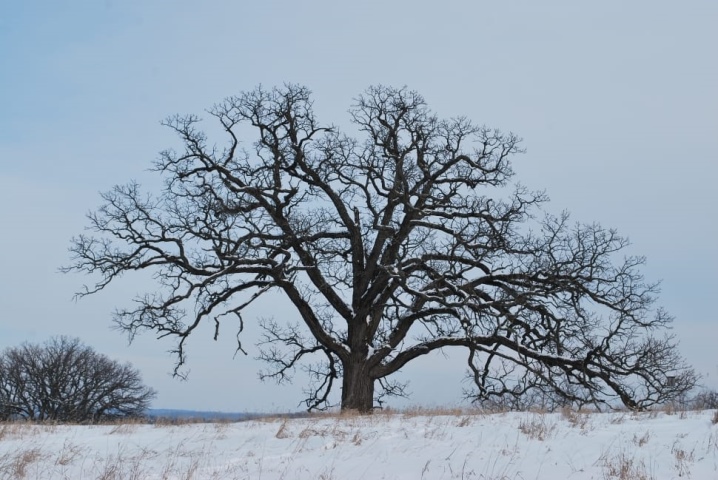



































































The comment was sent successfully.